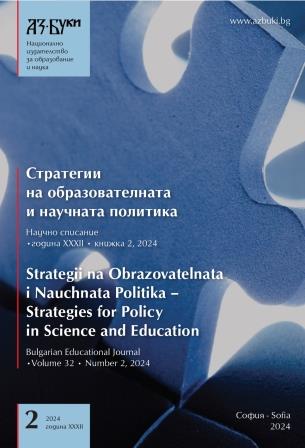Approaches to Assessing the Creative Climate and Potential for Innovativeness of Educational Organizations
Approaches to Assessing the Creative Climate and Potential for Innovativeness of Educational Organizations
Author(s): Anna VarbanovaSubject(s): Social Sciences, Education, Sociology, Higher Education , State/Government and Education, Sociology of the arts, business, education, Economic development, Globalization, Sociology of Education
Published by: Национално издателство за образование и наука „Аз-буки“
Keywords: organizational climate; potential for innovativeness; assessment of creative climate for innovations
Summary/Abstract: The paper provides an overview of selected methods and instruments for assessing the innovative capacity of organizations in general while raising questions about their potential application to schools. The premise is that diagnostics would be pointless if it were not accompanied by a strategy as well as a tool at the fingertips of school managers or leaders because the forms in which innovative potential can be manifested in a school are various. Innovation is not merely an object of transfer and exchange, but a matter of organizational climate which needs to be nurtured. Thus, the paper argues that the research of potential for innovativeness should be conducted by assessing the creative climate instead of organizational innovative culture; and suggests that organizational microclimate in the educational organization should be accompanied by efforts to foster, and respectively – assess – the team‘s competencies related to generating and implementing local innovative solutions. Whatever strategies, approaches, and skill sets the managing team chooses or has access to, these can only be effectively applied if 1) the settings (givens and constraints) are well understood and are taken into account; and 2) there is an awareness of the differences between traditional management and innovation management, which is associated with facilitating processes rather than leading them. The latter is covered elsewhere and not addressed here.
Journal: Стратегии на образователната и научната политика
- Issue Year: 32/2024
- Issue No: 2
- Page Range: 224-232
- Page Count: 9
- Language: English
- Content File-PDF

